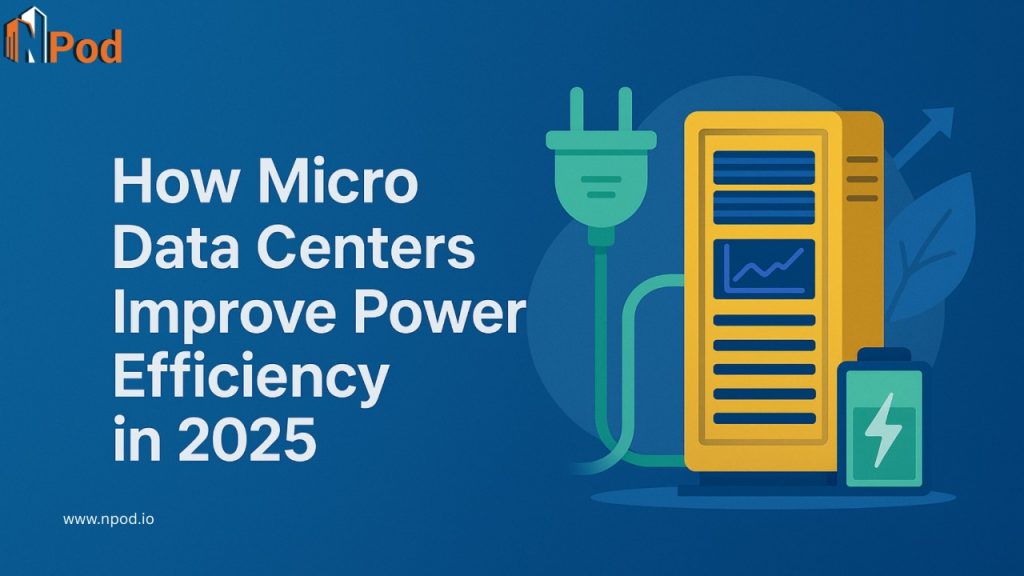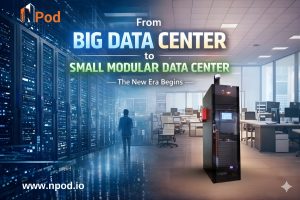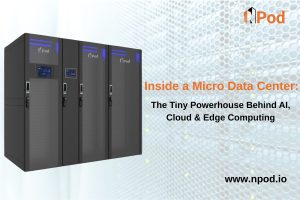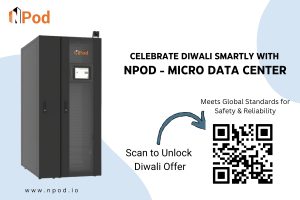Data centers are currently the building blocks of modern business in an era where digital transformation is pushing every industry forward. Nonetheless, inefficiency in terms of power is a real problem for traditional data centers as a result of escalating energy prices, ecological issues, and the fast-paced growth of data at the edge.
Micro Data Center can assist with that. Besides facilitating edge computing, micro data centers’ smarts, scalability, and small form factors are transforming energy management. By 2025, power efficiency within micro data centers will be a necessity instead of an option.
This blog discusses the benefits of micro data centers, how they significantly enhance data center power efficiency, and how India is embracing this innovative technology.
What Are Micro Data Centers?
Micro data centers are small, self-contained rooms that house networking, storage, and computer equipment, as well as security, cooling, and backup power. They may be installed close to data generation at the edges of networks, with the benefit of real-time processing and lower latency.
Micro data center, unlike large-scale data centers, are designed for spaces that are confined, including
- Smart factories
- Retail stores
- Medical centers
- College campuses
- Rural or remote sites
They are modular, flexible, and—most importantly—energy efficient.
Why Power Efficiency Matters in 2025
Data center power consumption has long been a significant operational issue. However, the need for edge data centers has increased in 2025 due to the Internet of Things (IoT), growing digitization, and the rollout of 5G.
Power efficiency in micro data centers is essential for the following reasons:
- Environmental Impact: Achieving sustainability requires lowering carbon emissions.
- Operating Costs: Between 30 and 60 percent of data center operating expenses are related to energy bills.
- Edge Deployment: Power access to remote locations is frequently costly or restricted.
- Scalability: You can grow without going over budget with effective power management.
How Micro Data Centers Improve Power Efficiency

- Compact Design = Lower Power Need
A smaller footprint directly lowers energy consumption because there are fewer racks to power and cool.
- Specific Cooling Systems
By using in-row or in-rack cooling, a micro data center can do away with the need to cool the entire space. Additionally, some use liquid cooling, which is ten times more effective than air cooling.
- Scalability in Modules
Only what you require is powered by you. Micro data centers expand to meet your needs, compared to traditional data centers where energy is still used by unused racks.
- Power Management Integrated
Power consumption is continuously monitored and optimized by smart UPS (Uninterruptible Power Supply) and PDU (Power Distribution Unit) systems.
- Edge Placement Scales Back Transmission Loss
By pushing processing to the edge, less data has to be transmitted over long distances, which saves bandwidth and energy dollars.
- AI & Automation for Energy Efficiency
Energy efficiency in data centers is assisted by AI-driven monitoring software that detects inefficiencies, predicts failures, and manages workloads.
Energy-Efficient Micro Data Center in India
The demand for energy-efficient micro data centers in India is being fueled by India’s booming digital expansion, especially in Tier 2 and Tier 3 cities. Public agencies and companies are looking for facilities that enable:
- Smart Cities
- Online Banking
- Distance Learning
- Digital health
- Monitoring and Intelligent Traffic
In such applications, micro data centers meet processing needs sustainably.
NetForChoice NPOD – Designed for Power Efficiency
NetForChoice’s latest-generation micro data center solution, NPOD, is designed for edge computing environments and can be rapidly deployed anywhere, such as telecom towers, warehouses, and basements.
Power Efficiency Key Features of NPOD:
- Smart Cooling: In order to optimize energy consumption, NPOD units employ environment-based adaptive cooling.
- Power Monitoring: For optimal efficiency, integrated sensors continuously monitor power consumption.
- Compact Footprint: Less power and cooling are needed due to the space-saving design.
- Green Energy Ready: Ideal for remote locations, it can be powered by solar or hybrid energy sources.
Companies can aid their digital transformation goals and cut their data center energy expenditure as much as possible by adopting NPOD.
Next-Gen Green Edge Data Center Solutions
Next-generation scalable, sustainable, and AI-enhanced data infrastructure is the future. Expect to see:
- AI-assisted predictive cooling
- MDCs powered by renewable sources
- Power balancing and smart PDU automated
- Zero-downtime energy failover systems
Energy-efficient micro data centers such as NPOD are crucial to building a green digital future for 2025 and beyond.
Final Thoughts
Power efficiency in micro data centers is more important than ever since power prices are rising and sustainability is becoming a must. Switching to energy-efficient micro data center solutions is the right move whether you’re managing a manufacturing facility, a retail chain, or a smart city.
In order to ensure that your company remains effective, resilient, and environmentally conscious, solutions like NetForChoice’s NPOD set the standard for creating green, dependable, and future-ready digital infrastructure.
FAQs
- In comparison to a traditional data center, how much power can be saved by a micro data center?
Depending on deployment and workload, micro data centers can cut power consumption by 40–60%.
- Is it possible to set up a micro data center in an area with unstable electricity?
Yes, the majority of solutions, such as NPOD, support solar integration, UPS, and battery backups.
- What is PUE in a micro data center?
PUE (Power Usage Effectiveness) for MDCs is typically between 1.2 and 1.4, indicating high efficiency compared to 1.7–2.0 in traditional DCs.
- Can big businesses use micro data centers?
Yes, businesses use MDCs for remote locations, branch offices, and backup data. Large data centers have been enhanced by them, not replaced.
- Which sectors gain the most from MDCs that use less energy?
Manufacturing, BFSI, healthcare, education, telecom, and smart cities




